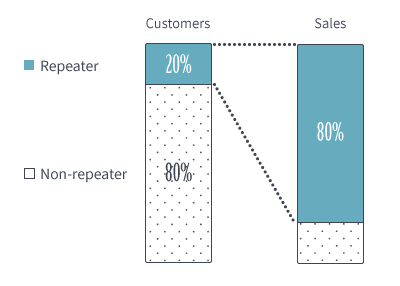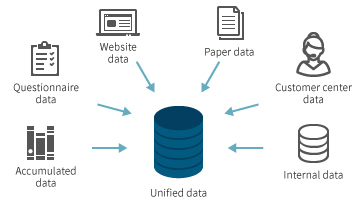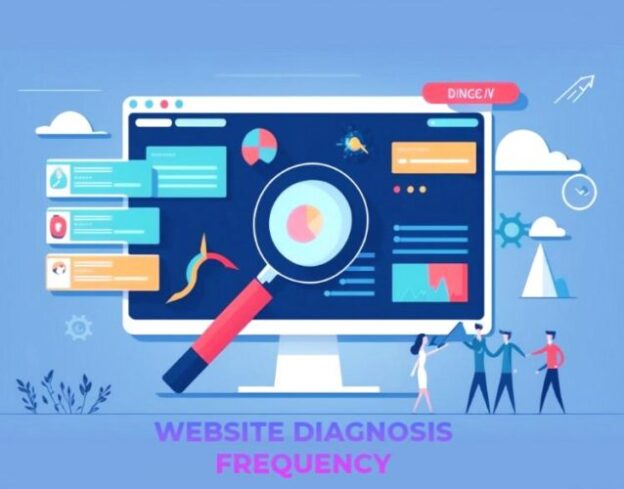
CRM Support
Introduction – Difficulties in today’s business
As a result, there are endless challenges in order to sustain a company business. One of the challenges is instense competition among companies which contribute to the following factors.
FACTOR#1: Multiple choices for consumers
Market always not getting tired of approaching consumers with their best products under different type of platforms. A wide variety of products are used to draw in consumers looking for an array of goods. Fast-change and diversify demand has become consumers’ consideration.
FACTOR#2: Accessible information
It is easy to compare a product’s usage, quality and prices at anytime via the Internet. Word-of-mouth has become an uncontrollable buying behaviour trend for a consumer. There is a high chance for you to lose your customers when negative comments go viral in internet.

FACTOR#3: Rapid changes in technology trends
Even if new products and new services are introduced using the latest technology, the technology itself will soon become obsolete, or it will be followed by other companies in a short time. As a result, maintaining own advantage is getting difficult.
Under such circumstances, are not these methods being implemented to strengthen profitability at many companies?
- – Enhancement of advertisement & promotion
- – Strengthen dealer incentives
- – Discounts
However, probably there are not many companies that recognize how much these methods actually contribute to profits.
The following graph is from an American report, it mentioned the average lifetime of S&P 500 companies is decreasing. It describes that the company’s survival is getting difficult due to the complicated business environment.

(Source) : https://www.cnbc.com/2017/08/24/technology-killing-off-corporations-average-lifespan-of-company-under-20-years.html
The average lifetime of companies was 60 years in the 1950s, but it became less than 20 years in 2012, it is shorter than 40 years.This phenomenon is a global trend.
We would like to propose CRM that realizes “improving sales while reducing unnecessary expenses” which is the most important factor for company growth.
What is LTV?
Do you know the word “LTV”? Or if you already know, do you have LTV data of your customers?
LTV stands for Life Time Value, this is the total number of profits that a single customer brings to a company throughout his/her lifetime.
How important is high LTV to you?
“The majority of sales are from few repeat customers” is a phenomenon seen in all industries, it is also known as “Pareto principle (80/20 rule)”. In other words, a few “high LTV customers” bring more sales. In fact, this phenomenon also can be seen in our (Icomm’s) clients too, it is around 20~30% of their customers are producing 70~80% of sales. This means having many repeat customers (high LTV customers) contributes directly to the company.

Most of marketing activities from companies such as advertisements, sales promotions are “mass approach” that targets to mass, it doesn’t distinguish between past purchasers and new customers. However, with this marketing activities alone, it is difficult to obtain repeat customers who lead to stable sales.
For customers who have purchase experiences before, it is possible to foster new customers to repeat customers by implementing CRM instead of mass approach.
Implementation of CRM — We start with your customers. (Customers always come first)
In CRM, “customer” is taken as the starting point of thinking at any occasion. Overview of CRM is, accumulate and manage customer data, analyze data from various point of view to materialize the customers, plan and execute the communication with customers, evaluate the results, implement improvement activities. This series of workflows (PDCA) done continuously.
1. Accumulation and management of customer data
The first thing you need is to know about your customers. Customer data is indispensable for that. The following is an example of customer data.
(Basic profile)
Name, Email address, Phone number, Address, Gender, Age, Occupation etc.
(Purchase information)
Product, Purchase price, Purchase place, Warranty situation etc.
(Access information)
Usage of website (Login history, Browsing history of website contents, etc.)
If customer data exist at hand, there are many cases that preparation for these data is needed in advance. Even if customer data exist at hand, there are many cases that preparation for these data is needed in advance. For example, there are many data internally with different format such as in digital like CSV and excel, and in paper like questionnaire, warranty card etc.
In such a case, it is necessary to consolidate the data format and clean data that can not be used. This is important preparations for CRM.

If you do not own customer (=end user) data yet, the first thing need to do is to create a mechanism that accumulates customer data at your side.
(Examples of the mechanism)
- – Warranty website which product’s warranty information can be checked on the site
- – Membership website which members can enjoy exclusive contents and experiences by being a member
We design and develop these website with keeping in mind “utilization of customer data to CRM”.
2. Customer data analysis (Visualization of customers)
After customer data is ready, we analyze data to grasp current trend of customer purchase behavior. In order to implement an effective CRM, visualization of customers is important. By this analysis, we can think answers to these questions like “What kind of customers are easy to purchase products in this price range?” “Which customers are proper that we send cross-sell/ up-sell message?” etc.
3. Create a communication plan
After data analysis, we make a communication plan includes “to who (= customer segmentation), what action we expect (= objective), what kind of message (= content), how to deliver (= communication method: e.g. email, phone, SNS, SMS, advertising)” based on the analysis results.
4. Execute the communication plan
After communication plan created, communication tools such as direct mail, email, online campaign application form, banner image, etc is needed. These items should be effective for target customers. After prepared, send message to each customers.
5. Check the results
Check the actual result such as email open rate, number of campaign participants, etc by comparing with KPI.
6. Analyze the results
Guess the factors that behind the actual results above, and utilize it for improvement. Normally there are multiple factors behind the result, such as customer segments, contents, communication method, timing, user-friendliness that leads users for conversion. To achieve effective CRM, this result analysis is most important.
The effective CRM operation method varies depending on the country and region. We can support CRM operation by considering the local society, the local business environment and the local customer viewpoint with our accumulated business experiences in the local market.







